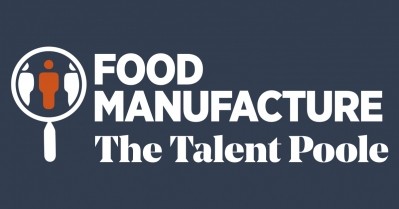Short read
How to nail your next presentation

Anyone in a leadership role will be familiar with presenting – it’s a key part of the job but that doesn’t mean it’s easy.
As highlighted in a 2021 paper by the University of Calabria and Institute for Study of Labor, the ability to speak competently in public is a prerequisite for many high-profile careers, with up to 60% of a manager’s working time taken up by meetings.
However, being a confident presenter doesn’t necessarily mean you have to be oozing with self-confidence.
“You just need a formula that helps you to tell stories,” explained leadership coach Amy Wilkinson, podcaster of Oh For Food’s Sake and founder of Fearless Foodies.
“We tell stories in everyday conversation – we’re doing it now. These skills are transferable. You just need to think about what the key messages are that you want to get across, whether it’s in front of 3 people or 300. Ok, you’re going to flex it, but it’s effectively the same formula.”
Wilkinson has been working in the food and drink sector for 24 years across various functions and her present toils have very much been inspired by her own confidence gremlins.
“I absolutely love the food and drink industry…[but] also, it’s nearly ‘killed’ me on a number of occasions because it’s really high pressured.”
Generally, women struggle more than men when it comes to public speaking and confidence.
The aforementioned Italian study found that while women are more willing to present one-on-one than men (43% vs 39%), they are considerably less likely to give a public presentation (24% vs 39%).
Data published by Forbes adds further weight to these findings, with a 2022 survey revealing that more than 75% of female respondents aren’t confident in their work relationships, and lack supportive environments, growth and development opportunities and professional networks.
Confidence issues in females appear to begin young, with Speaker’s Trust research finding that 50% of 15-year-old girls in England lack the confidence to speak in public, compared to 30% of boys.
Whilst the gender gap in food and drink is closing, with female founders no longer such a novel find, there is obviously still a way to go. Opportunities for progression must be available to all and factors such as imposter syndrome and anxiety should not stand in the way. Workplaces need to ensure they are providing all employees with training, resources and tools to hit their work goals.
But nailing these ‘soft skill’ goes beyond gender, Wilkinson pointed out.
“It’s a really important part of how we make change in the industry – that people are feeling more confident to speak up in a meeting or in a formal presentation.”
Founder of The Differential and co-founder of Explners, Mark Whalley, agreed; “Food in particular is so complex in all it’s different functions and personality types who need to be on the same page. So many problems occur from people not being able to get ideas from A to B.
“So much could be fixed and improved by everybody being able to have better conversations with each other and present ideas more effectively.”
What makes a good presenter?
Confidence in presenting comes from understanding yourself, preparation and being authentic.
“A good presenter connects with the audience – they’re thinking about who’s in the room and how they might like to receive information,” said Whalley.
“A good presenter is just somebody who sounds like themself,” he continued, adding that it’s usually very obvious if a presenter hasn’t written their presentation in their own voice.
“They stumble when they're trying to think through concepts and phrases that they themselves don't really understand,” he elaborated. “I would always encourage people to write down what you want to say. Literally write down the whole thing in advance; it forces you to have ideas and work out what your ideas are.”
Wilkinson agreed and said for those who struggle with writing, dictation can be a great alternative. “Nobody knows what that script is, it’s just to help you.”
Artificial intelligence (AI) can also be used as a mechanism to help you bounce ideas, Whalley suggested, using programmes such as ChatGPT to devise ideas for conversation points or themes for example.
When it comes to laying out your ideas and structuring your presentation – which can often feel like an overwhelming task – one top tip Whalley offered is to imagine you are writing a letter explaining the topic to a friend.
“Cross out ‘dear’ and ‘regards’ and I promise you’ve written something miles better than if you formally sat down and tried to write a presentation on it.”
Nailing the nerves
Feeling anxious about public speaking is a perfectly normal response and is something that becomes less nerve-wracking the more we do it.
When we feel nervous, our sympathetic nervous system – which controls our heart rate, blood pressure, digestion, urination and sweat, among other things – can activate our ‘fight or flight mode’, an instinctive reaction to danger.
“It's not a real danger in that that our body thinks it is,” Wilkinson reasoned, explaining that when we start to feel this way it’s important to do something that “grounds you”, such as deep breathing or even looking outside, which will indicate to your body that you are safe.
“Nobody wants you to mess up,” added Whalley. “Nobody's going to take any pleasure from that. It's not something that's in their best interests.”
Being a credible speaker
Certain actions such as power poses and speaking with your head held high and shoulders back can also help ease your mind, at the same time as making you look more credible to your audience.
“If you take up space, people are much more likely to take notice of what you’re saying,” she explained.
Interestingly, studies also show that the pitch of your voice has an impact on how audiences perceive you, with lower tones shown to be associated with competence and trust.
In one study published by the National Library of Medicine, both male and female listeners found lower-pitched female voices to be more competent, stronger and more trustworthy.
Male, but not female, listeners also found lower-pitched male voices to be more competent and stronger. Neither men nor women found the lower- or higher-pitched male voices to be more trustworthy though.
Whilst this could come as frustrating news for those with higher pitched tones, there is no reason as to why you can’t play with your vocal chords – i.e. lower them – when presenting to a room.
Practice makes perfect
Wilkinson and Whalley stressed the importance of practice – which will not only give you more confidence when it comes to delivering your ideas in public, but also act as a useful tool if you get caught out by technology failures or your time being cut unexpectantly short.
“If you've got a time squeeze, this goes back to practising in advance and knowing what takes priority and knowing what your line is. Practise it so that it's going to last 16 minutes but know how to do it in 10 – know which bits you can speed up and which bits are less important.”
And if your slides do happen to disappear, Whalley says the best thing to do is take a beat.
“Take a minute to remember and you'll either remember or you won't be able to, and you can literally say ‘I'm sorry I've completely lost my point. I'll come back to it’. The worst thing you can do is try and style it out. That spirals you, and all of a sudden forget everything else.”
If you enjoyed this, why not also read our exclusive article on 'How to beat networking nerves'?
















